Researches
Artificial Intelligence Applied In The Design Of Sewage Treatment Plant Projects – Comparative Study With Real Data
Views : 9
Usually dispatched in 2 to 3 days
Usually dispatched in 2 to 3 days
Category:
Researches
Only logged in customers who have purchased this product may leave a review.
Related books
A Review of Reverse Osmosis Membrane Fouling and Control Strategies
Introduction
This paper reviews membrane contamination and dirt Control strategies, focusing on the latest developments.
The first goal From this paper is to illustrate the types of dirt.
The second goal is To discuss the latest pollution mitigation strategies, including pre-treatment, monitoring, cleaning, and surface modification as well as updates.
A Review of Reverse Osmosis Membrane Fouling and Control Strategies
Introduction
This paper reviews membrane contamination and dirt Control strategies, focusing on the latest developments.
The first goal From this paper is to illustrate the types of dirt.
The second goal is To discuss the latest pollution mitigation strategies, including pre-treatment, monitoring, cleaning, and surface modification as well as updates.
Adsorption of Heavy Metal Ions from Aqueous Solutions onto Rice Husk Ash Low Cost Adsorbent
Abstract
In the present study, adsorption of Zn (II), Cd (II) and Hg (II) ions on rice husk ash (RHA) has been investigated in single, binary and tertiary systems.
Batch experiments were also carried out for mono-and multi-component systems with varying metal ions concentrations (mg/l) to investigate the competitive adsorption characteristics.
Adsorption of Heavy Metal Ions from Aqueous Solutions onto Rice Husk Ash Low Cost Adsorbent
Abstract
In the present study, adsorption of Zn (II), Cd (II) and Hg (II) ions on rice husk ash (RHA) has been investigated in single, binary and tertiary systems.
Batch experiments were also carried out for mono-and multi-component systems with varying metal ions concentrations (mg/l) to investigate the competitive adsorption characteristics.
Correlation Between BOD5 and COD for Al- Diwaniyah Wastewater Treatment Plants to Obtain The Biodigrability Indices
ABSTRACT
The present study aims to establish an empirical correlation between biochemical oxygen demand (BOD5) and chemical oxygen demand (COD) of the sewage flowing in Al-Diwaniyah wastewater treatment plant. The strength of the wastewater entering the plant varied from medium to high. High concentrations of BOD5 and COD in the effluent were obtained due to the poor performance of the plant. This was observed from the BOD5 /COD ratios that did not confirm with the typical ratios for the treated sewage. Regression equations for BOD5 and COD removal percentages were suggested which can be used to evaluate rapid effluent assessment after the treatment processes or optimal process control to improve the performance of wastewater treatment plants. The average Biodegradability indices (B.I) of Al-Diwaniyah wastewater plants was found to be 0.69. The equations relating the percentage removal of BOD5(y) with influent BOD5(x), y= 0.044x + 80.66 and the percentage removal of COD (y) with influent COD (x), y= 0.045x + 55.15 were found with high correlation R2 =0.72 and 0.86 respectively. Keywords: BOD5, COD, BOD5/COD ratio, Biodegradability indices, BOD5 and COD correlations
Correlation Between BOD5 and COD for Al- Diwaniyah Wastewater Treatment Plants to Obtain The Biodigrability Indices
ABSTRACT
The present study aims to establish an empirical correlation between biochemical oxygen demand (BOD5) and chemical oxygen demand (COD) of the sewage flowing in Al-Diwaniyah wastewater treatment plant. The strength of the wastewater entering the plant varied from medium to high. High concentrations of BOD5 and COD in the effluent were obtained due to the poor performance of the plant. This was observed from the BOD5 /COD ratios that did not confirm with the typical ratios for the treated sewage. Regression equations for BOD5 and COD removal percentages were suggested which can be used to evaluate rapid effluent assessment after the treatment processes or optimal process control to improve the performance of wastewater treatment plants. The average Biodegradability indices (B.I) of Al-Diwaniyah wastewater plants was found to be 0.69. The equations relating the percentage removal of BOD5(y) with influent BOD5(x), y= 0.044x + 80.66 and the percentage removal of COD (y) with influent COD (x), y= 0.045x + 55.15 were found with high correlation R2 =0.72 and 0.86 respectively. Keywords: BOD5, COD, BOD5/COD ratio, Biodegradability indices, BOD5 and COD correlations
Water Desalination Using Solar Thermal Collectors Enhanced by Nanofluids
Introduction
In the future, the world is confronted with energy and freshwater shortage. Desalination of brackish or seawater is one of the most important ways to solve the water scarcity issue [1, 2]. The use of solar energy or waste heat sources is acceptable for water-producing systems of such a small size [3–5]. The relevancy of nanomaterials is to realize the best attainable properties within the smallest possible loadings through homogenized distribution and stable suspension of these nanoparticles[6–11]. Often, heat transfer improvement in solar collectors is one of the basic problems in energy saving, compact designs, and different operating temperatures. Researchers also investigated the multiwalled carbon nanotubes (MWCNTs) and water nanofluids with a pH of 3.5, 6.5, and 9.5, and Triton X-100 as a surfactant (0.2 wt %) using flat-plate solar collectors. It was found that the nanofluids have better heat transfer performance in acidic and alkaline water due to the influence of the isoelectric point. The higher efficiency (67 %) was obtained at pH 9.5 and 3.5 with a water flow rate of 0.0333 kg s–1. A stable nanofluid based on ethylene glycol-containing nanosheets of graphene oxide was prepared by Yu et al. [12]. The improvement in thermal conductivity relies strongly on the volume fraction of the nanosheet of graphene oxide and increases with higher nanoparticle loading. The heat efficiency was enhanced up to 61.0 % using a nanosheet loading of 5.0 vol %. For seven days, the thermal conductivity of the fluids remained almost constant, which suggests their high stability. In the measured temperature range, the enhancement value was independent of the temperature. Peyghambarzadeh et al. [13, 14] studied force convection techniques in an excessively base water nanofluid, which was experimentally compared to water in a vehicle heat exchanger with different nanofluid loadings. It was experimentally investigated to improve the rate of heat transfer. The variable effect of the inlet temperature of the fluid in the heat exchanger on the heat transfer coefficient was evaluated. The findings showed that the incremental fluid circulation rate would increase the output rate of heat transfer, while the temperature of the fluid entering the heat exchanger had negligible effects. Meanwhile, water nanofluid subservience at low-volume loadings would increase the heat transfer rate efficiency by approximately 44 % compared to water
Water Desalination Using Solar Thermal Collectors Enhanced by Nanofluids
Introduction
In the future, the world is confronted with energy and freshwater shortage. Desalination of brackish or seawater is one of the most important ways to solve the water scarcity issue [1, 2]. The use of solar energy or waste heat sources is acceptable for water-producing systems of such a small size [3–5]. The relevancy of nanomaterials is to realize the best attainable properties within the smallest possible loadings through homogenized distribution and stable suspension of these nanoparticles[6–11]. Often, heat transfer improvement in solar collectors is one of the basic problems in energy saving, compact designs, and different operating temperatures. Researchers also investigated the multiwalled carbon nanotubes (MWCNTs) and water nanofluids with a pH of 3.5, 6.5, and 9.5, and Triton X-100 as a surfactant (0.2 wt %) using flat-plate solar collectors. It was found that the nanofluids have better heat transfer performance in acidic and alkaline water due to the influence of the isoelectric point. The higher efficiency (67 %) was obtained at pH 9.5 and 3.5 with a water flow rate of 0.0333 kg s–1. A stable nanofluid based on ethylene glycol-containing nanosheets of graphene oxide was prepared by Yu et al. [12]. The improvement in thermal conductivity relies strongly on the volume fraction of the nanosheet of graphene oxide and increases with higher nanoparticle loading. The heat efficiency was enhanced up to 61.0 % using a nanosheet loading of 5.0 vol %. For seven days, the thermal conductivity of the fluids remained almost constant, which suggests their high stability. In the measured temperature range, the enhancement value was independent of the temperature. Peyghambarzadeh et al. [13, 14] studied force convection techniques in an excessively base water nanofluid, which was experimentally compared to water in a vehicle heat exchanger with different nanofluid loadings. It was experimentally investigated to improve the rate of heat transfer. The variable effect of the inlet temperature of the fluid in the heat exchanger on the heat transfer coefficient was evaluated. The findings showed that the incremental fluid circulation rate would increase the output rate of heat transfer, while the temperature of the fluid entering the heat exchanger had negligible effects. Meanwhile, water nanofluid subservience at low-volume loadings would increase the heat transfer rate efficiency by approximately 44 % compared to water
Current Advances in Membrane Technologies for Saline Wastewater Treatment A Comprehensive Review
ABSTRACT
The saline wastewater from various sources including agriculture and industrial activities, appears to have high salt concentration, organic content and other pollutants which can harm the environment. Thus, saline waste[1]water treatment has become one of the major concerns in many countries. Membrane technology offers great potential in saline wastewater treatment due to its high permeate quality, flexibility, and desalination capability. This paper highlights the current development in various types of membrane processes such as pressure driven[1]based membranes, forward osmosis, membrane distillation, electrodialysis and membrane bioreactor, either as a stand-alone or integrated process for saline wastewater treatment. The membranes performance in terms of water reclamation as well as resource recovery is discussed. Besides, the membrane fouling issue is highlighted, and the efficiency of various fouling mitigation strategies when dealing with real/challenging saline wastewater are reviewed. Finally, the future challenges and outlook in the context of membrane application for saline wastewater treatment are discussed.
Current Advances in Membrane Technologies for Saline Wastewater Treatment A Comprehensive Review
ABSTRACT
The saline wastewater from various sources including agriculture and industrial activities, appears to have high salt concentration, organic content and other pollutants which can harm the environment. Thus, saline waste[1]water treatment has become one of the major concerns in many countries. Membrane technology offers great potential in saline wastewater treatment due to its high permeate quality, flexibility, and desalination capability. This paper highlights the current development in various types of membrane processes such as pressure driven[1]based membranes, forward osmosis, membrane distillation, electrodialysis and membrane bioreactor, either as a stand-alone or integrated process for saline wastewater treatment. The membranes performance in terms of water reclamation as well as resource recovery is discussed. Besides, the membrane fouling issue is highlighted, and the efficiency of various fouling mitigation strategies when dealing with real/challenging saline wastewater are reviewed. Finally, the future challenges and outlook in the context of membrane application for saline wastewater treatment are discussed.
Removal Of Polar Organic Micropollutants By Pilot-Scale Reverse Osmosis Drinking Water Treatment
Abstract : The robustness of reverse osmosis (RO) against polar organic micropollutants (MPs) was investigated in
pilot-scale drinking water treatment. Experiments were carried in hypoxic conditions to treat a raw anaerobic riverbank filtrate spiked with a mixture of thirty model compounds. The chemicals were selected from scientific literature data based on their relevance for the quality of freshwater systems, RO permeate and drinking water. MPs passage and the influence of permeate flux were evaluated with a typical low-pressure RO membrane and quantified by liquid chromatography coupled to high-resolution mass spectrometry. A strong inverse correlation between size and passage of neutral hydrophilic compounds was observed. This correlation was weaker for moderately hydrophobic MPs. Anionic MPs displayed nearly no passage due to electrostatic repulsion with the negatively charged membrane surface,
whereas breakthrough of small cationic MPs could be observed. The passage figures observed for the investigated set of MPs ranged from less than 1%e25%. Statistical analysis was performed to evaluate the relationship between physicochemical properties and passage. The effects of permeate flux were more pronounced for small neutral MPs, which displayed a higher passage after a pressure drop.
Removal Of Polar Organic Micropollutants By Pilot-Scale Reverse Osmosis Drinking Water Treatment
Abstract : The robustness of reverse osmosis (RO) against polar organic micropollutants (MPs) was investigated in
pilot-scale drinking water treatment. Experiments were carried in hypoxic conditions to treat a raw anaerobic riverbank filtrate spiked with a mixture of thirty model compounds. The chemicals were selected from scientific literature data based on their relevance for the quality of freshwater systems, RO permeate and drinking water. MPs passage and the influence of permeate flux were evaluated with a typical low-pressure RO membrane and quantified by liquid chromatography coupled to high-resolution mass spectrometry. A strong inverse correlation between size and passage of neutral hydrophilic compounds was observed. This correlation was weaker for moderately hydrophobic MPs. Anionic MPs displayed nearly no passage due to electrostatic repulsion with the negatively charged membrane surface,
whereas breakthrough of small cationic MPs could be observed. The passage figures observed for the investigated set of MPs ranged from less than 1%e25%. Statistical analysis was performed to evaluate the relationship between physicochemical properties and passage. The effects of permeate flux were more pronounced for small neutral MPs, which displayed a higher passage after a pressure drop.
Renewable Energy-Driven Desalination: New Trends And Future Prospects Of Small Capacity Systems
Abstract:
New trends and future prospects for small capacity systems of Renewable Energy-driven Desalination (REDES) are reviewed and assessed in this paper over a nominal desalination capacity range of 3–1000 m3/d. A thorough literature review is reported in order to evaluate current research and developing activities. Outstanding commercial prospects in the near future are identified for two off-grid REDES technologies under development. First, wave energy converters with direct coupling to seawater desalination. Second, solar micro gas turbines with biofuel backup coupled to reverse osmosis (RO) desalination and/or zero liquid discharge water treatment. These systems, as well as mature REDES plants (namely PV/RO and wind turbines/RO), will benefit from forthcoming advances in energy efficiency in the RO process itself. The Closed Circuit RO desalination (CCROTM) concept may be a key configuration for enhancing RE-driven RO desalination. Additionally, opportunities for innovation in seawater RO desalination with variable power consumption are highlighted. On the other hand, our conclusions highlight opportunities for developing novel portable REDES systems based on solar membrane distillation with a portable linear Fresnel concentrator manufactured by SOLATOM. Additionally, the concept of portable systems could foster the commercial development of microbial desalination cells combined with solar PV energy and RO powered by tidal currents.
Renewable Energy-Driven Desalination: New Trends And Future Prospects Of Small Capacity Systems
Abstract:
New trends and future prospects for small capacity systems of Renewable Energy-driven Desalination (REDES) are reviewed and assessed in this paper over a nominal desalination capacity range of 3–1000 m3/d. A thorough literature review is reported in order to evaluate current research and developing activities. Outstanding commercial prospects in the near future are identified for two off-grid REDES technologies under development. First, wave energy converters with direct coupling to seawater desalination. Second, solar micro gas turbines with biofuel backup coupled to reverse osmosis (RO) desalination and/or zero liquid discharge water treatment. These systems, as well as mature REDES plants (namely PV/RO and wind turbines/RO), will benefit from forthcoming advances in energy efficiency in the RO process itself. The Closed Circuit RO desalination (CCROTM) concept may be a key configuration for enhancing RE-driven RO desalination. Additionally, opportunities for innovation in seawater RO desalination with variable power consumption are highlighted. On the other hand, our conclusions highlight opportunities for developing novel portable REDES systems based on solar membrane distillation with a portable linear Fresnel concentrator manufactured by SOLATOM. Additionally, the concept of portable systems could foster the commercial development of microbial desalination cells combined with solar PV energy and RO powered by tidal currents.
Artificial Neural Network Model for the Prediction of Groundwater Quality
The present article delves into the examination of groundwater quality, based on WQI, for drinking purposes in Baghdad City. Further, for carrying out the investigation, the data was collected from the Ministry of Water Resources of Baghdad, which represents water samples drawn from 114 wells in Al-Karkh and Al-Rusafa sides of Baghdad city. With the aim of further determining WQI, four water parameters such as (i) pH, (ii) Chloride (Cl), (iii) Sulfate (SO4), and (iv) Total dissolved solids (TDS), were taken into consideration. Additionally, to anticipate changes in groundwater WQI, IBM® SPSS® Statistics 19 software (SPSS) was used to develop an artificial neural network model (ANNM). With the application of this ANNM model, the results obtained illustrated high prediction efficiency, as the sum of squares error functions (for training and testing samples) and coefficient of determination (R2), were found to be (0.038 and 0.005) and 0.973, respectively.
Artificial Neural Network Model for the Prediction of Groundwater Quality
The present article delves into the examination of groundwater quality, based on WQI, for drinking purposes in Baghdad City. Further, for carrying out the investigation, the data was collected from the Ministry of Water Resources of Baghdad, which represents water samples drawn from 114 wells in Al-Karkh and Al-Rusafa sides of Baghdad city. With the aim of further determining WQI, four water parameters such as (i) pH, (ii) Chloride (Cl), (iii) Sulfate (SO4), and (iv) Total dissolved solids (TDS), were taken into consideration. Additionally, to anticipate changes in groundwater WQI, IBM® SPSS® Statistics 19 software (SPSS) was used to develop an artificial neural network model (ANNM). With the application of this ANNM model, the results obtained illustrated high prediction efficiency, as the sum of squares error functions (for training and testing samples) and coefficient of determination (R2), were found to be (0.038 and 0.005) and 0.973, respectively.
Fouling and Cleaning Characteristics of Reverse Osmosis (RO) Membranes
Abstract:
This work deals with fouling and successive cleaning of RO membrane fouled by an organic foulant, sodium alginate using a laboratory-scale cross flow test unit. First, spiral-wound RO membrane was fouled with sodium alginate solution up to 10% and 15%, respectively at an applied pressure of 1380 kPa with flow rate of 10 lit/min. An anionic surfactant, sodium dodecyl sulfate (SDS) was used as a chemical cleaning agent for cleaning of RO membrane. The effect of cleaning chemical dose and cross-flow velocity on the membrane chemical cleaning duration to achieve 100% cleaning efficiency (i.e., to get original water flux) was also investigated. As the SDS concentration increases, the membrane chemical cleaning time decreases due to increase in the solubility of the foulant (when the surface tension decreases by an increase in the SDS concentration). Furthermore, the membrane chemical cleaning time decreases with increasing cross-flow velocity of the cleaning chemical solution (SDS). Higher cross-flow velocity enhances the turbulence at the fouling layer and hence the mass transfer of the foulant from the fouling layer to the bulk solution is improved, then the SDS has weakened the structural integrity of the fouling layer. It is observed that better cleaning is occurred with higher concentration of SDS and flow rate. The obtained results clearly reveal that SDS cleaning is proved to be an efficient cleaning method for RO membranes fouled with organic foulant.
Fouling and Cleaning Characteristics of Reverse Osmosis (RO) Membranes
Abstract:
This work deals with fouling and successive cleaning of RO membrane fouled by an organic foulant, sodium alginate using a laboratory-scale cross flow test unit. First, spiral-wound RO membrane was fouled with sodium alginate solution up to 10% and 15%, respectively at an applied pressure of 1380 kPa with flow rate of 10 lit/min. An anionic surfactant, sodium dodecyl sulfate (SDS) was used as a chemical cleaning agent for cleaning of RO membrane. The effect of cleaning chemical dose and cross-flow velocity on the membrane chemical cleaning duration to achieve 100% cleaning efficiency (i.e., to get original water flux) was also investigated. As the SDS concentration increases, the membrane chemical cleaning time decreases due to increase in the solubility of the foulant (when the surface tension decreases by an increase in the SDS concentration). Furthermore, the membrane chemical cleaning time decreases with increasing cross-flow velocity of the cleaning chemical solution (SDS). Higher cross-flow velocity enhances the turbulence at the fouling layer and hence the mass transfer of the foulant from the fouling layer to the bulk solution is improved, then the SDS has weakened the structural integrity of the fouling layer. It is observed that better cleaning is occurred with higher concentration of SDS and flow rate. The obtained results clearly reveal that SDS cleaning is proved to be an efficient cleaning method for RO membranes fouled with organic foulant.
Perspectives And Applications Of Nanotechnology In Water Treatment
Abstract
Industrialization and excessive use of pesticides for boosting agricultural production have adversely affected the ecosystem, polluting natural water reserves. Remediation of contaminated water has been an area of concern with numerous techniques being applied to improve the quality of naturally available water to the level suitable for human consumption. Most of these methods, however, generate by-products that are sometimes toxic. Heterogenous photocatalysis using metal oxide nanostructures for water purification is an attractive option because no harmful by-products are created. A discussion on possible methods to engineer metal oxides for visible light photocatalysis is included to highlight the use of solar energy for water purification. Multifunctional photocatalytic membranes are considered advantageous over freely suspended nanoparticles due to the ease of its removal from the purified water. An overview of water remediation techniques is presented, highlighting innovations through nanotechnology for possible addressing of problems associated with current techniques.
Perspectives And Applications Of Nanotechnology In Water Treatment
Abstract
Industrialization and excessive use of pesticides for boosting agricultural production have adversely affected the ecosystem, polluting natural water reserves. Remediation of contaminated water has been an area of concern with numerous techniques being applied to improve the quality of naturally available water to the level suitable for human consumption. Most of these methods, however, generate by-products that are sometimes toxic. Heterogenous photocatalysis using metal oxide nanostructures for water purification is an attractive option because no harmful by-products are created. A discussion on possible methods to engineer metal oxides for visible light photocatalysis is included to highlight the use of solar energy for water purification. Multifunctional photocatalytic membranes are considered advantageous over freely suspended nanoparticles due to the ease of its removal from the purified water. An overview of water remediation techniques is presented, highlighting innovations through nanotechnology for possible addressing of problems associated with current techniques.
Removal of Escherichia Coli from Domestic Wastewater Using Electrocoagulation
ABSTRACT
The objective of this study was to evaluate the efficiency of electrocoagulation in the removal of Escherichia coli from domestic and urban wastewaters and to determine the effects of the main operational parameters on the process. An electrocoagulation reactor with aluminum and iron electrodes was built for this purpose. A factorial design was applied, where amperage, treatment time, and pH were considered as the factors and E. coli percent removal was the response variable. After 20 min of treatment, >97% removal efficiency was achieved. The highest E. coli removal efficiency achieved was 99.9% at a neutral pH of 7, amperage of 3 A, and treatment time of 60 min. However, the removal efficiency of close to 99% was also achieved at natural wastewater pH of 8.5. The statistical analyses showed that the three tested factors significantly affected the E. coli removal percentage (p < 0.05). These results indicate that electrocoagulation has a high disinfection power in a primary reactor in removing water con[1]taminants as well as simultaneously removing pathogenic microorganisms when compared to biological treatment processes. This represents an additional benefit, because it will considerably reduce the use of chlorine during the final disinfection stage.
Removal of Escherichia Coli from Domestic Wastewater Using Electrocoagulation
ABSTRACT
The objective of this study was to evaluate the efficiency of electrocoagulation in the removal of Escherichia coli from domestic and urban wastewaters and to determine the effects of the main operational parameters on the process. An electrocoagulation reactor with aluminum and iron electrodes was built for this purpose. A factorial design was applied, where amperage, treatment time, and pH were considered as the factors and E. coli percent removal was the response variable. After 20 min of treatment, >97% removal efficiency was achieved. The highest E. coli removal efficiency achieved was 99.9% at a neutral pH of 7, amperage of 3 A, and treatment time of 60 min. However, the removal efficiency of close to 99% was also achieved at natural wastewater pH of 8.5. The statistical analyses showed that the three tested factors significantly affected the E. coli removal percentage (p < 0.05). These results indicate that electrocoagulation has a high disinfection power in a primary reactor in removing water con[1]taminants as well as simultaneously removing pathogenic microorganisms when compared to biological treatment processes. This represents an additional benefit, because it will considerably reduce the use of chlorine during the final disinfection stage.

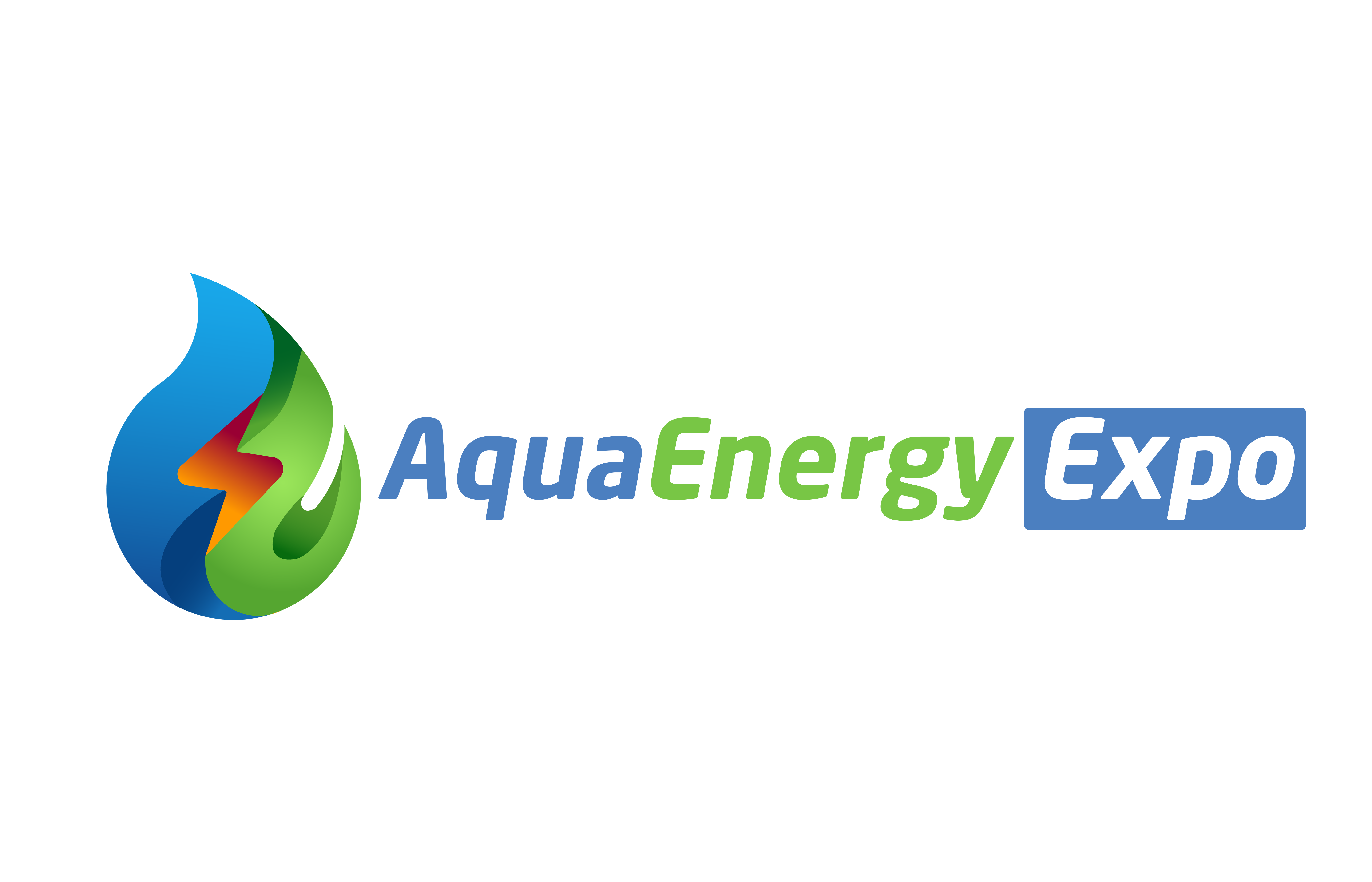

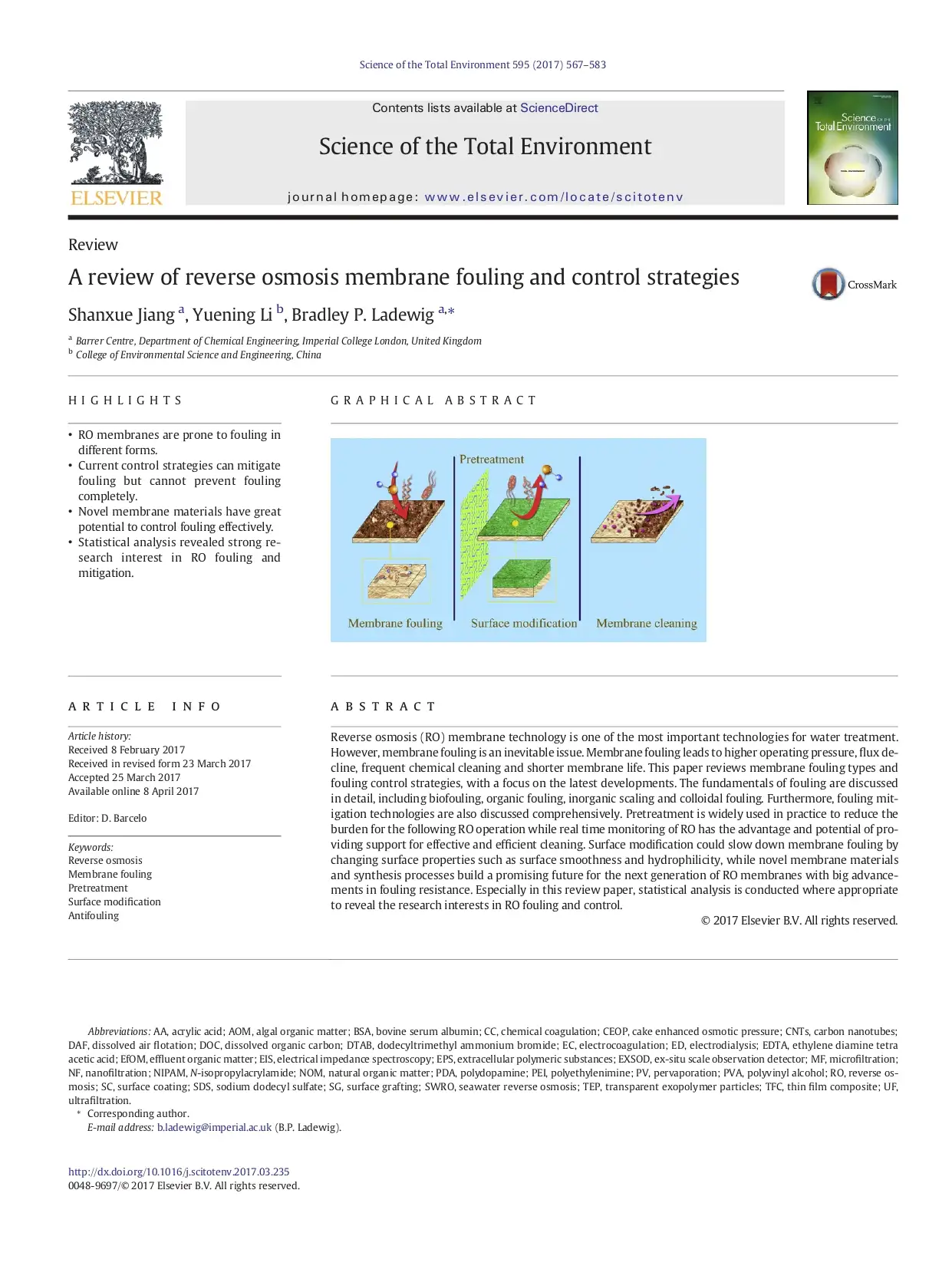
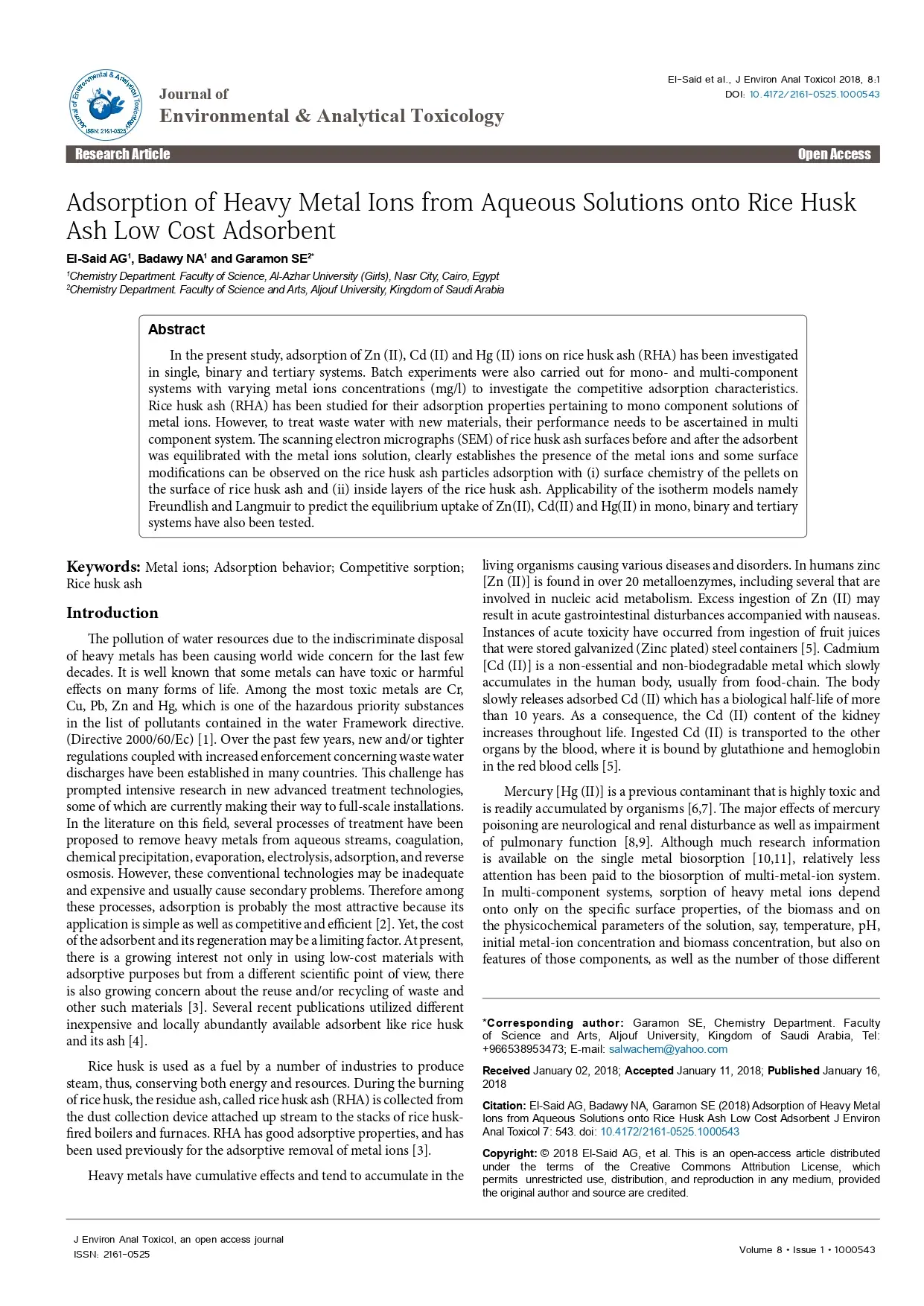

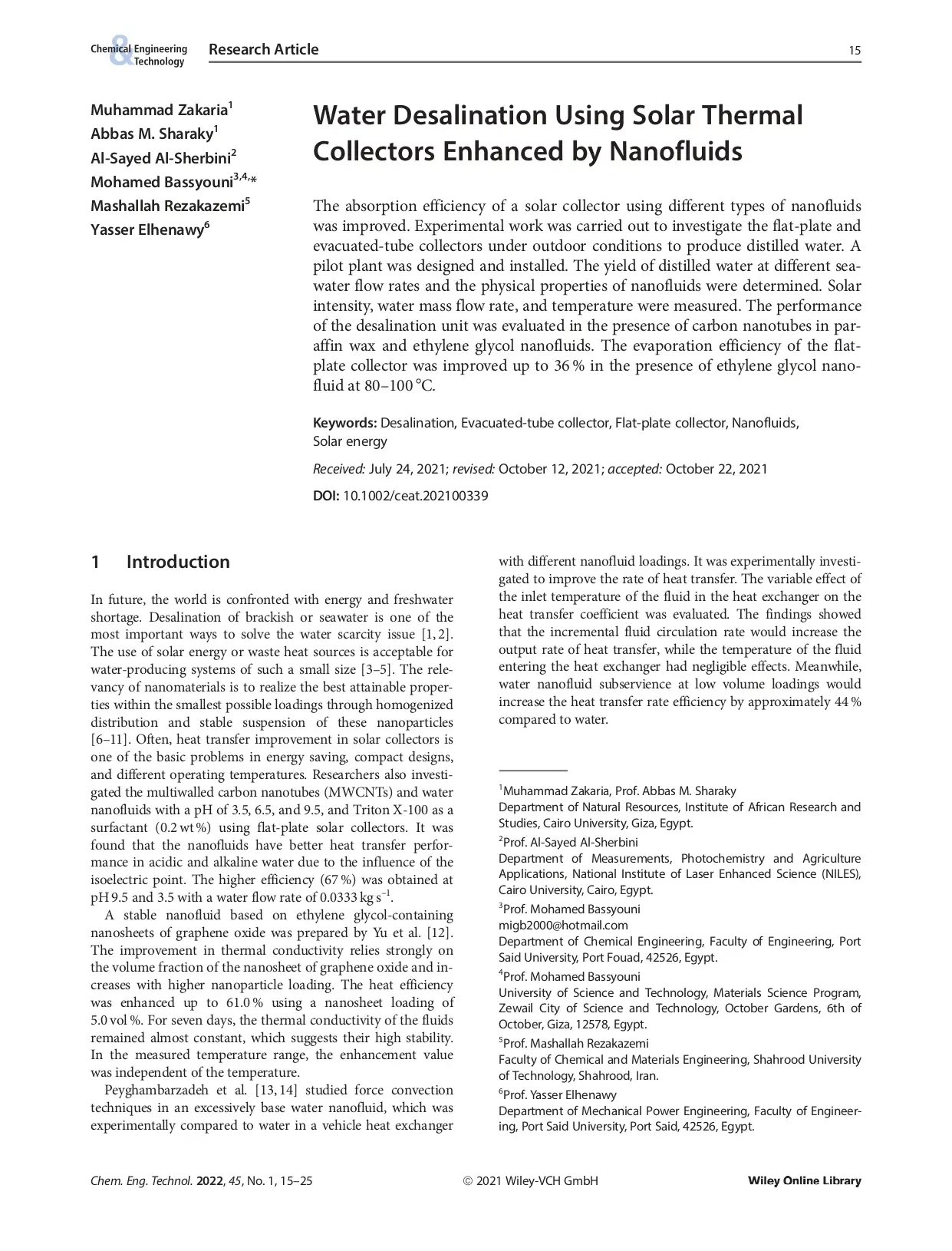
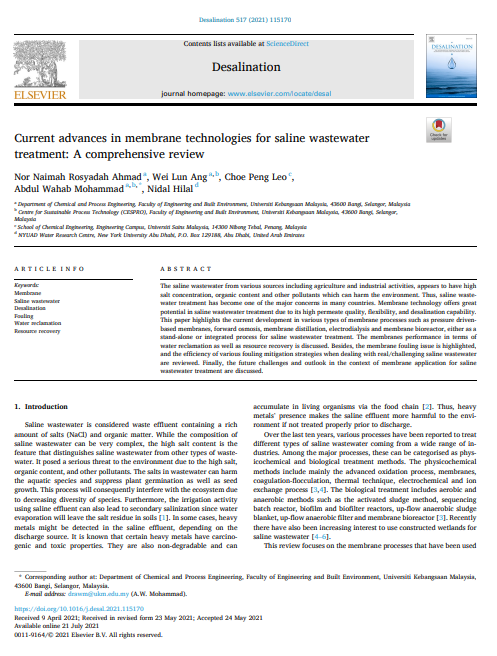
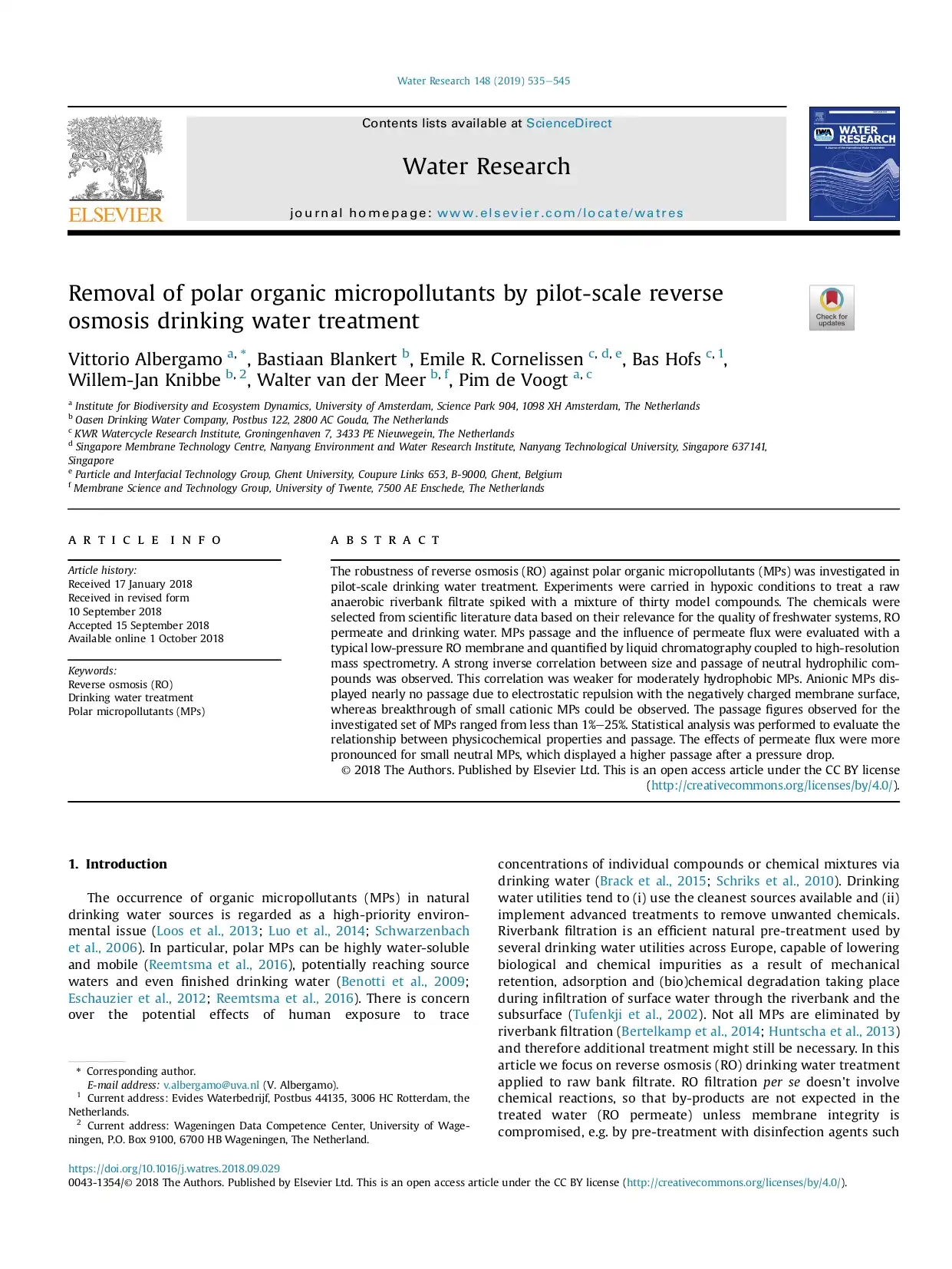
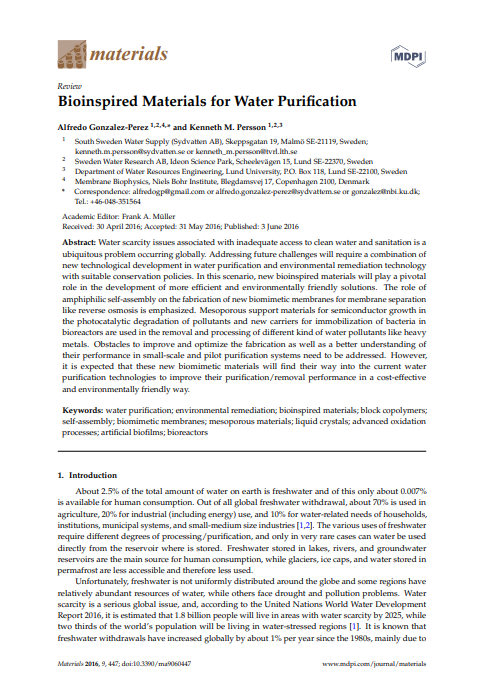
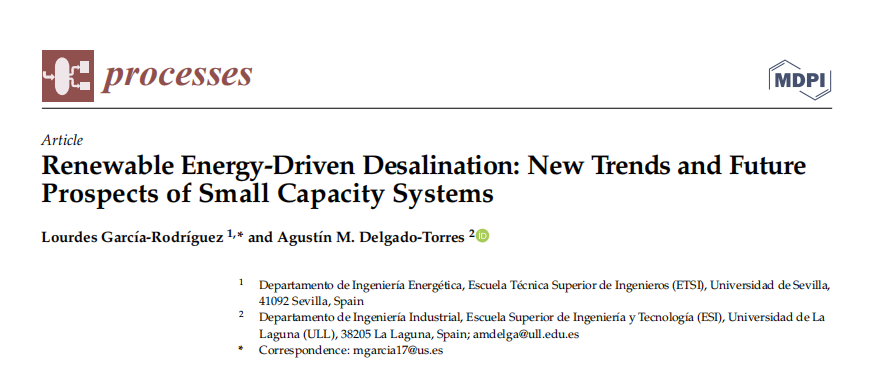
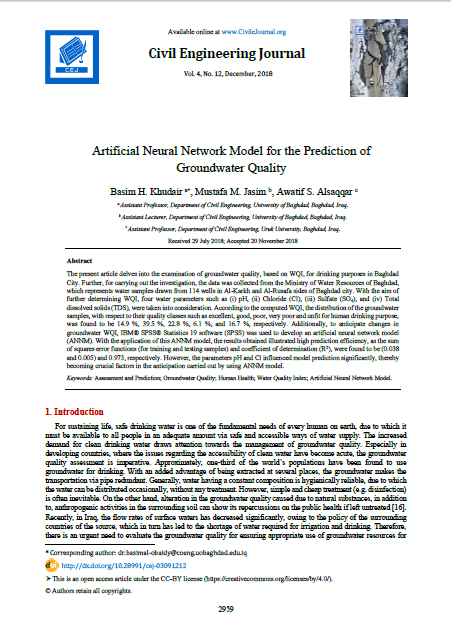
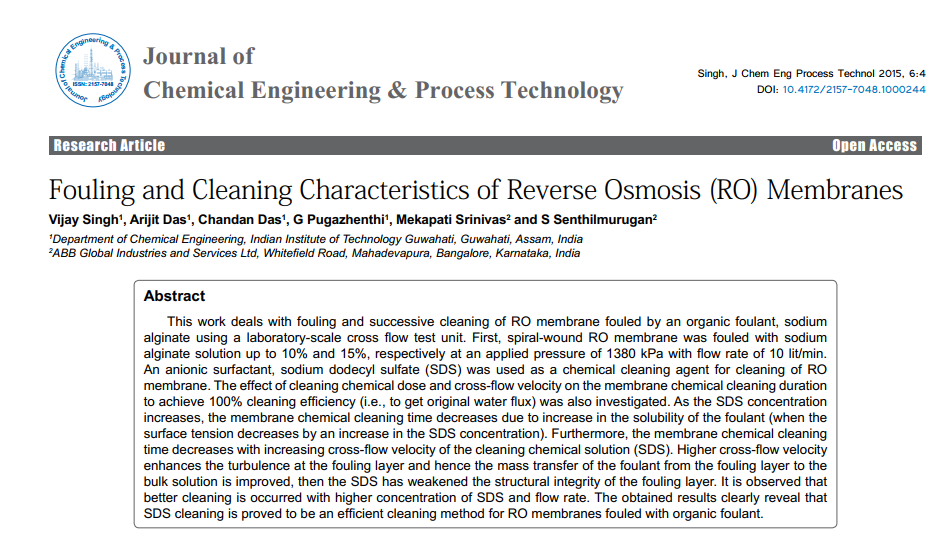
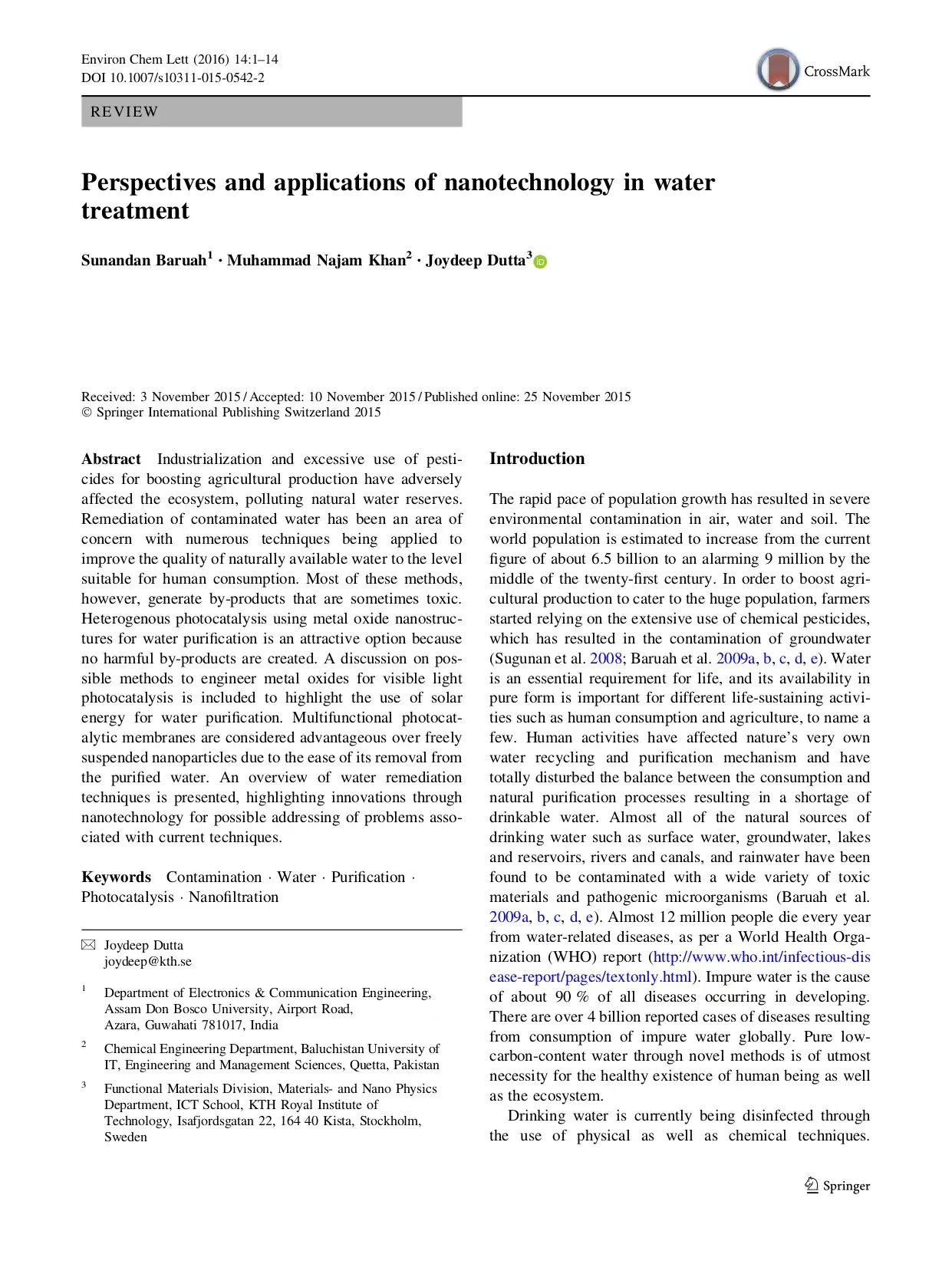
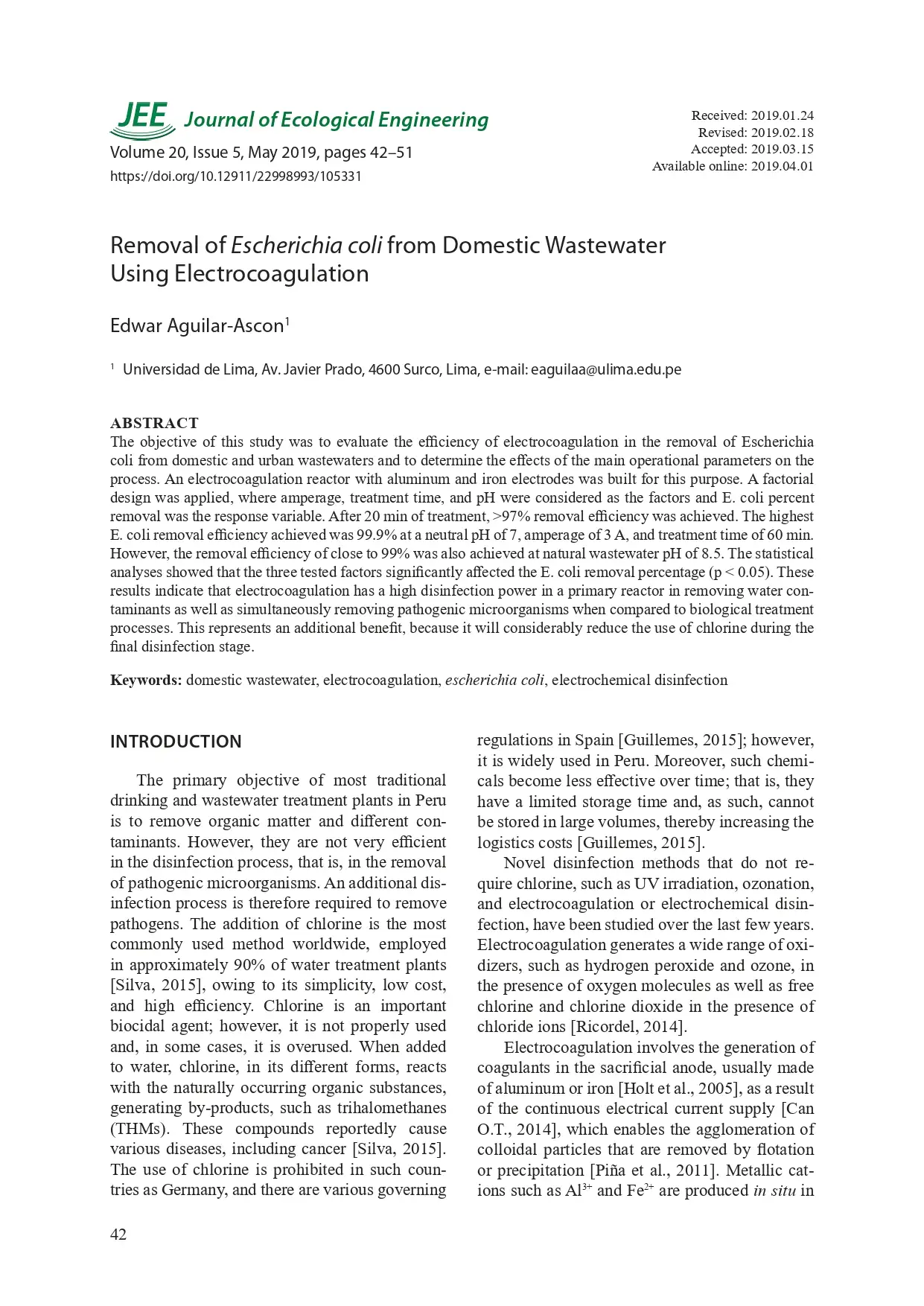
Reviews
There are no reviews yet.